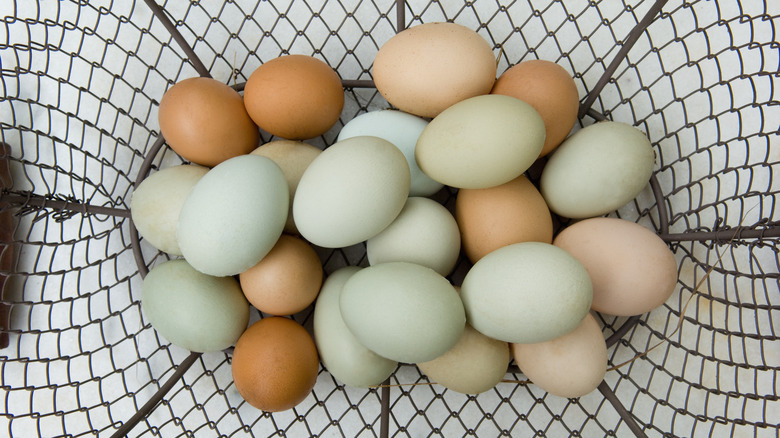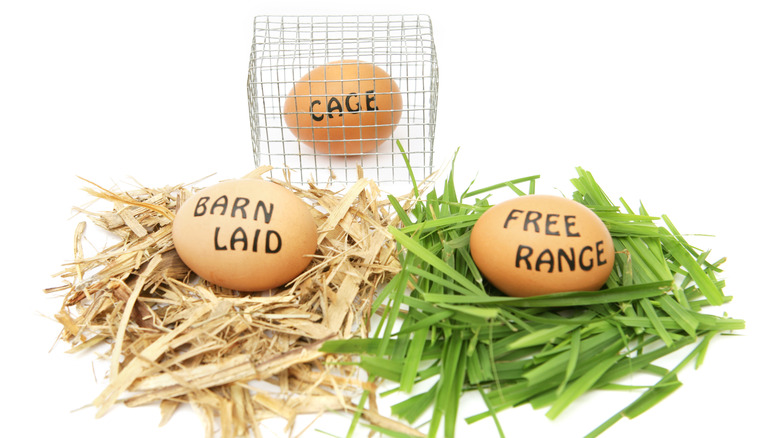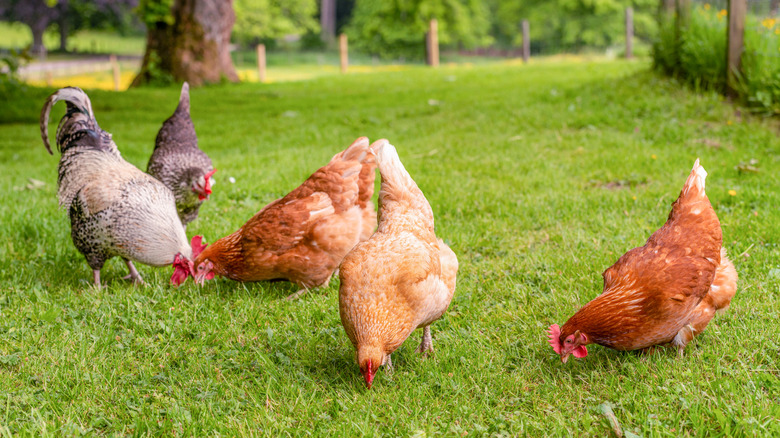What It Means When Eggs Are Labeled 'Barn-Laid'
There was a time when eggs were simply called "eggs." They came from a chicken and they mostly came in white and brown colors. But, it's not so clear cut anymore. As time has progressed and people have become more attuned to the way that chickens are raised, consumers have become more selective on the kinds of eggs they want. Cartons are now emblazoned with descriptions like cage-free, free-range, pasture-raised, and the less-known kind called barn-laid.
The term really says it all: This type comes from chickens that have laid the eggs in a barn, or an enclosed structure. You might think that this applies to all eggs; after all, many free-range and cage-free chickens prefer to lay their eggs inside a roost in a structure like a barn. But this doesn't make all of them equal. Since choosing ethically sourced foods has become a priority for so many people, it's important to know what these different categories mean. Barn-laid eggs come from chickens that are not caged yet they don't have the freedom to roam outdoors the way free-range hens do.
The ins and outs of barn-laid eggs
The chickens that produce eggs labeled as "barn-laid," are raised in enclosed structures but are not limited to individual cages. The structures or barns are temperature-controlled to keep the animals comfortable and they are free to roam inside. The barns contain nesting boxes where the chickens lay their eggs, as well as scratching pads and perches. Being inside, they are completely protected from the outdoor elements and predators, but they also don't spend any time roaming in the fresh air and sunlight.
While these chickens have more space than caged hens, the barns they are raised in are often very crowded. This gives them the opportunity to socialize and perch where they want but not much room to roam freely. They are fed and given water but cannot forage for natural foods that would otherwise be found outside. This produces a somewhat more premium egg: barn-laid options are therefore usually more expensive than those from caged chickens but are lower in price than free-range eggs.
The difference between barn-laid and free-range eggs
As to why free-range eggs are so expensive, the answer lies in a lot of little reasons. Free-range chickens tend to be bigger than caged chickens which means they need more food. Like their barn-laid counterparts, they do have indoor facilities in which perches, nesting boxes, food, and water are kept. But free-range chickens are free to go outdoors during the day to roam and forage for food.The fact that they roam outside year-round, including the winter, also means they need more food. (Consider how hungry you feel after a cold day on the slopes; it's similar for chickens after a chilly day roaming in the snow). They are generally brought back indoors at night where they go to their nesting boxes and are safe from potential nocturnal predators.
Overall, the quality of eggs lies in the welfare of the chickens and their lifestyle. No matter their environment, chickens need a clean, well-maintained space that is free from disease and stocked with nesting boxes they feel secure in, and plenty of good food and clean water. Many would argue that eggs from smaller farms with lots of roaming space for the chickens might be the most ethically-produced, but you'll also probably pay a higher price. Whichever eggs you prefer, it's always a good idea to do your homework to make sure both the chickens and the eggs come from a reliable, responsible, and healthy source.



